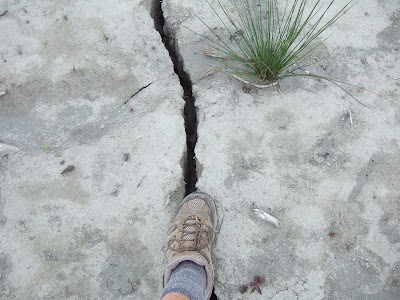The Olympic Mountains presented an odd problem. A mix of very thick forest, steep slopes and the fact that the mountains did not present a barrier to be crossed left the interior of the range as terra incognita all the way into the time Washington became a state. The mountain range is not long and was easily circumvented by simply sailing around them or traveling via well established trails and then later river boats and roads along the Chehalis River south of the range.
The result was that all the way into the 1880s, despite towns and cities growing up within view of the range, the interior of the range was unknown. With coastal Indians decimated by disease and also the great quake and tsunami of 1700 as well as the cultural upheaval brought about by the influx of Europeans and Americans any knowledge of the interior of the range, if any once existed, was lost.
As Seattle grew into a large city, residences began to speculate about what was in the interior of a range that was located a mere 25 miles from the city. Speculation ran to great mineral wealth, unknown species, monsters, a great lost tribe and civilization living within an idyllic valley. In the Fall of 1889 the Press Expedition began their trek to penetrate through the range from the Elwha River in the north and out via the Quinalt River at the southwest end of the range.
The expedition did not have satellite and aerial images like we do, but I plotted out the expedition route.
Press Expedition route
The expedition began with rather remarkable optimistic view of how travel through this landscape would proceed. First, they began the trip in early December assuming that it would be a mild winter. Unfortunately the winter proved to be very cold and their location on the north facing Olympic slopes put them in a bad spot. When western Washington is cold it is typically due to cold air flowing out of the Fraser River valley from the interior of British Columbia. This produces a northeast to southwest flow of air aimed directly at the Olympic Range. As the cold air flows across the Strait of Juan de Fuca it picks up moisture and then as it begins to rise over the Olympics the air cools further dumping copious amounts of snow on the lower slopes. This weather pattern continued throughout the winter greatly slowing the expedition progress.
The second optimistic idea was that the expedition would be able to travel well up the Elwha Rive via boat. After building a raft the party struggled with portage after portage until the gave up the idea.
Once deep in the range, the party knew that at some point they would have to leave the Elwha and cross over into the Quinalt River. The big question was where to do it. The image below shows the unfortunate route they picked.
The difficult detour
As can be seen, the party headed up a tributary, but their path west was blocked by glacier clad jagged mountain ridges. They followed one drainage by ascending a ridge line and traversing through deep early spring snow to the top of the drainage divide. The descended the ridge and found themselves back on the Elwha River as the upper reaches of the river curved around to the west. However, see low spot on the ridge to the west the party crossed over the ridge through the snow and on to the Quinalt River.
James Christie, Charles Barnes, John Sims, John Crumback, Christopher Hayes and Harris Runnalls were the first to pass through these mountains. They answered some of the speculations about the mountains. I make about 20 trips over to the Olympic Peninsula every year for work, but I have yet to enter the interior of the range - it is still terra incognita for me.
A good read Across the Olympic Mountains The Press Expedition, 1889-90 by Robert Wood provided a fair bit of the information in this post.











































